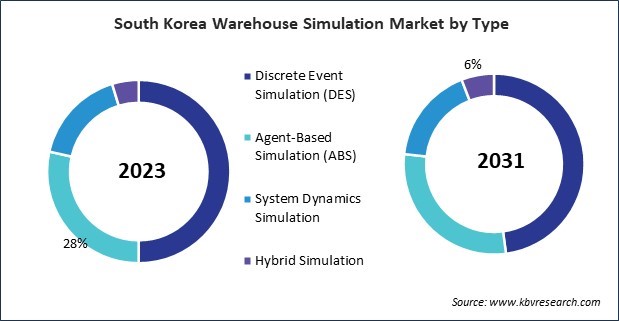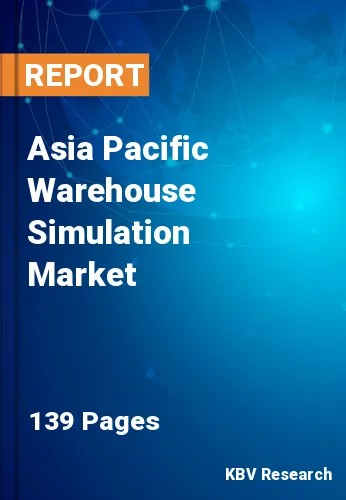The Asia Pacific Warehouse Simulation Market would witness market growth 14.6% CAGR during the forecast period (2024-2031).
The China market dominated the Asia Pacific Warehouse Simulation Market by Country in 2023, and would continue to be a dominant market till 2031; thereby, achieving a market value of $147.8 million by 2031. The Japan market is registering a CAGR of 13.9% during (2024 - 2031). Additionally, The India market would showcase a CAGR of 15.4% during (2024 - 2031).

As a consequence of the growing commitment to environmental responsibility in the supply chain, there has been an increase in the need for software that simulates warehouse operations. According to Carbon Disclosure Project (CDP) report, companies' supply chains are responsible for up to 11.4 times their direct emissions—more than 90% of their total greenhouse gas emissions. The same report also emphasized that companies are expected to incur costs of up to US$120 billion in the next five years as a result of environmental hazards in their supply chains.
Many companies are pressured to reduce their environmental footprint and adopt more sustainable practices. This includes optimizing warehouse layouts to minimize energy consumption, reducing the use of materials such as packaging, and improving overall efficiency to lower carbon emissions. This simulation enables companies to model and evaluate the environmental impact of different operational strategies, helping them to identify ways to reduce energy usage and waste. By optimizing their warehouse operations through simulation, companies can improve their sustainability efforts and reduce operational costs, becoming a competitive advantage in the marketplace.
Japan’s focus on automation and robotics in warehousing is a major factor driving the demand for this simulation. The Japanese government has been supporting the development of smart logistics as part of its efforts to address labor shortages and improve supply chain resilience. Society 5.0, a program that advocates for the incorporation of cutting-edge technologies such as AI, IoT, and robotics, has incentivized businesses to implement simulation tools in order to improve warehouse efficiency. As companies increasingly turn to autonomous systems to manage operations, this simulation plays a key role in testing and optimizing these automated solutions, ensuring smooth integration and high productivity. The Asia Pacific region is anticipated to continue to be a significant market for the simulation technologies as these trends persist.
Free Valuable Insights: The Global Warehouse Simulation Market is Predict to reach USD 1.4 Billion by 2031, at a CAGR of 14.2%
Based on Deployment, the market is segmented into On-Premises and Cloud-Based. Based on Vertical, the market is segmented into Automotive, Consumer Electronics, Healthcare & Pharmaceuticals, Food & Beverage, Retail & E-commerce, Logistics & Transportation, and Other Vertical. Based on Type, the market is segmented into Discrete Event Simulation (DES), Agent-Based Simulation (ABS), System Dynamics Simulation, and Hybrid Simulation. Based on countries, the market is segmented into China, Japan, India, South Korea, Australia, Malaysia, and Rest of Asia Pacific.
By Deployment
By Vertical
By Type
By Country
Our team of dedicated experts can provide you with attractive expansion opportunities for your business.

